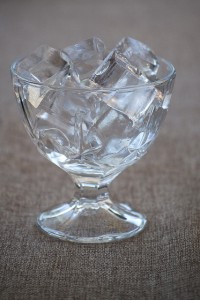Often on this blog, we talk about biofilms in water systems or water-borne pathogens. Even when we discuss the drinking water microbiome, it is seldom with a focus on any particularly beneficial bacteria. Although there has been some discussion about what essentially amounts to probiotics for water, there seems to be little literature in the area …
“In 2010, Americans were prescribed 258 million courses of antibiotics, a rate of 833 per thousand people. Such massive usage, billions of doses, has been going on year after year.” or so says Martin Blaser who has written a book (“Missing Microbes: How the Overuse of Antibiotics is Fueling Our Modern Plagues” published by Macmillan …
After some off-line dialogue related to my “Should you lick your baby’s dropped pacifier?” blog post, I have decided to post a separate comment regarding the hygiene hypothesis, mentioned in the introduction, and the plasticizer hypothesis, emphasized by some off-line correspondents. What is clear is that in the modern, human-occupied indoor environment, there are microbes …
A story on the May 6th NPR program, Morning Edition, “Parents’ Saliva On Pacifiers Could Ward Off Baby’s Allergies” features a focus on the human microbiome, partental behavior and babies’ allergies. “That word “microbiome” – describing the collection of bacteria that live in and on our bodies – keeps popping up. This time, researchers say …
Part of our ongoing mission is to get people to look beyond pathogens, to consider the microbiome as a whole (indoors or human), and to not assume all microbes are evil. I was particularly struck yesterday by an article on a “water-less shower” product being hyped on SmartPlanet. Especially this quote: “Though some of you …
As with our recent musings on probiotics for buildings, sometimes it’s fun and productive to think about the distant future in the microbiology of the built environment. And Royal Philips Electronics (Netherlands) has done just that with their futuristic “Microbial Home” project. I’m not saying every one of their ideas will work, or that I’m …
Another cool example of using beneficial microbes in the indoor environment… in this case using Bacillus strains to reduced odors in pub urinals. The company (CBIO) that markets this device called the “Clearinator” also has other neat sounding microbial-based devices such as the “Bactaerator” and the “Baccelerator”. Pretty simple really, they find bacterial strains that …
So I’m going to stick with a theme here and try to talk about beneficial uses of microbes in the built environment (like stabilizing the ground underneath buildings to mitigate the effects of earthquakes). Today I came across the research from a group of students at Newcastle University who designed a strain of Bacillus that …
When reading about the microbiology of the built environment there are far far more examples of the negative impacts of microbes on human health and building integrity than the reverse. Therefore, the occasional report of beneficial applications (however theoretical) deserves mention. Today I came across this old report (behind a pay wall) from the 2005 …

